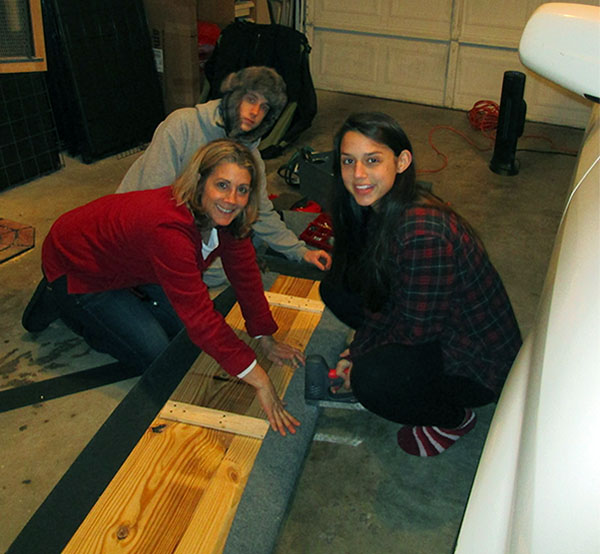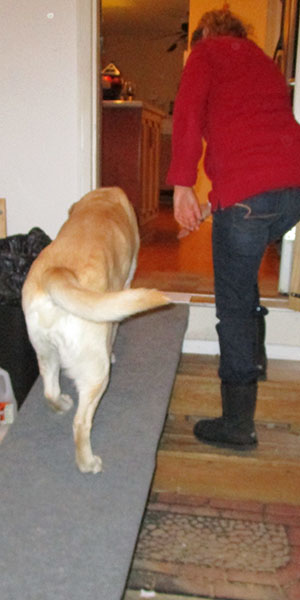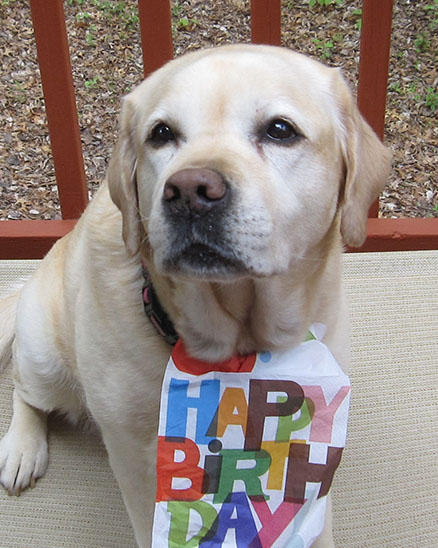It’s not easy watching your beloved pooch grow old, let alone with pain and / or dementia. Navigating through incontinence, lack of muscle control, expensive treatments, disinterest in social interaction or play and end-of-life decisions are incredibly difficult. Like humans, genetics and lifestyle often play a role in whether your dog ages gracefully or not! This life stage can be mediated with some adjustments
A dog I had many moons ago lived to be 16 years old! He was active and healthy until, at the age of 15, opted out of following the family upstairs. His movements slowed, he lost interest in food and slept more.

My kids helping me build the ramp

Helping Daisy up the ramp
Steps, such as some of the following, had to be taken to make his life easier and more manageable.
- Regular exercise with moderation! Walking keeps muscles strong, reduces obesity and builds appetite. In addition, getting outdoors and changing the scenery keeps the mind active and alert!
- Regular vet checkups should be continued especially since older dogs have weaker immune systems. Also, palpating the body for any lumps can increase early detection and subsequently, early diagnosis can improve chances for a quicker recovery. Often times, those lumps are simply fat deposits. In addition, keep nails trimmed especially if your senior is walking less often because those nails won’t experience as much wear.
- Maintain a healthy body weight. Obesity puts increased stress on the joints making it more difficult to move. It isn’t unusual for senior dogs to become picky eaters so, consider adjusting his/her diet with tastier and easier to digest soft low-fat food and add a combination of fish oil with a glucosamine and chondroitin supplement for coat, skin and joint support.
- Regular brushing helps keep the skin and coat healthy because, with age comes dry skin!
- Increase your home's accessibility for limited-mobility dogs. Lay nonskid surfaces like mats along hallways and typical pathways used by your dog to reduce slipping and skidding. Also, place portable dog ramps on stairs to make it easier to go up or down.
- Provide a better bed with waterproof pads, if necessary, for your geriatric dog. Orthopedic dog beds provide better support and comfort especially to areas around the joints.
It isn’t easy watching your once eager and energetic pup age and show signs of stress and pain. Even harder is knowing when the pain has decreased his/her quality of life to the point that there really is almost no quality of life. Then there is the added decision of weighing possible treatment and expense with actual life extension. These are difficult choices only you along with your veterinarian can decide.
In the meantime, try to spend as much time with your senior dog as you can. Follow a regular routine of appropriate amounts of daily, gentle exercise which also promotes appetite for a healthy low-fat diet. Provide a grooming routine to include coat and teeth brushing and nail trims and spend as much quality time together as you can!


